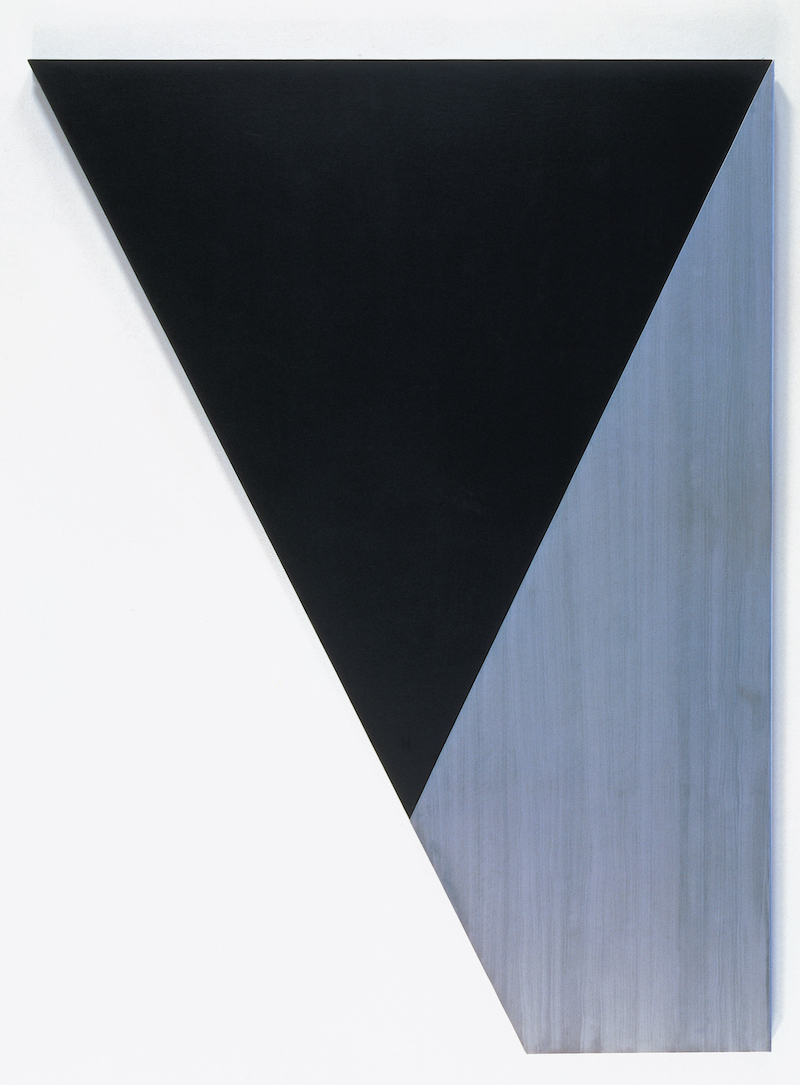
Tableau Relief (Painting Relief) P 1133, 1993, Acrylic and aluminum on canvas, 200 x 150 cm
Gottfried HONEGGER, 1917 – 2016 (Zurich, Swiss)
|
Gottfried Honegger was a fervent advocate of concrete art in Europe in the second half of the twentieth century. He was born in 1917 in Zurich where he died in 2016. He began by painting more figurative pieces in the early 1930s. However, in 1938, his work came under the avant-garde influences of the start of the century and he began to produce compositions with Fauvist and Cubist accents. Honneger was attracted by the École de Paris. He was in the French capital in 1939 when war broke out and as a result, returned to Zurich. This began an important period of activity for him as a graphic artist. However, he continued to paint, experimenting with various artistic materials which led him along a path towards abstract art. From 1956-1957, Honegger abandoned all reality, ultimately committing himself to abstract art. Aligned to other concrete artists in Zurich (including Max Bill and Richard Paul Lohse), he nevertheless stayed connected to pictorial art and opposed to applying strict programmes. 1958 marked the beginning of the Tableaux-Reliefs period. Relief is created, not by layers of paint but instead using marouflage in numerous monochrome red layers onto cut cardboard canvas. The crevices in the cardboard sections provide a synthesis for division and union. These red monochrome works were then exhibited at the Martha Jackson Gallery in New York the following year. In 1960, Gottfried Honegger settled in Paris. During this period, he had a number of encounters with key figures within the avant-garde movement including Michel Seuphor, Aurelie Nemours, Marcelle Cahn and Sonia Delaunay.
In the 1970s, the artist read Jacques Monod’s work, Le Hasard et la nécessité which led him to introduce unpredictability into his work.
Ever since the 1990s, relief paintings - emancipated from the painting’s plane - have been confronted with space in the form of reliefs or painted metal sculptures. Orthogonality, surface work and covering techniques (which highlight the graphic artist’s skill) have been developed by the artist throughout his career, leading him to include volume in his mural works, creating a complete synthesis of colour, volume and light. For Gottfried Honegger, art has a social role to play in broadening our consciousness and liberating us. He confirmed this vision in 1990 when he founded the Espace de l'Art Concret in Mouans-Sartoux and later donated his collection to the French State in 2000. The work entitled, Tableau-Relief P1133 presented in the exhibition, marks the evolution of this series of relief paintings which first began in 1958. The rectangular canvas presented as a portrait, has been cut along the left side. The remaining part, similar to a trapezium, consists of a black painted canvas on which a brushed aluminum surface has been overlaid. Taking shaped canvas principles from American artists such as Ellsworth Kelly, Gottfried Honegger changes the perception of the wall through his work’s expression. The wall is no longer just a support but part of the work. The painting is no longer framed but integrated into the wall and architecture.
Crédit photo:
|